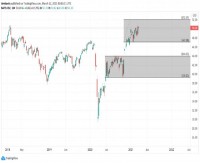|
|
Nikan has over 14 years experience in leading Wall Street and City firms
on the buy and sell-side including Lehman Brothers, Goldman-Sachs, Deutsche
Bank, Sanford Bernstein Alliance, Citadel and Nomura where he is currently Head
of European Rates Strategy. He has worked in a variety of primarily technical or
quantitative fixed income roles from Rates & Hybrids Structuring to Rates
Strategy and Quantitative Modelling to Asset Allocation and Risk Management to
Prepayment Analysis and Securitization and Capital Markets. Education: PhD
Mathematics (Courant Institute, NYU), Asst Prof University of Illinois.
Structured Product, by its nature is something that can deliver diverse risky
cashflows to investors. Delivering this to a conventional investor involves
hedging, sometimes statically, sometimes dynamically with vanilla options, swaps
and swaptions, basis and asset swaps, correlation products and a whole host of
other 'slightly less exotic' products. That being said, structured product is a
huge business, one that generates large returns for banks (less so recently) and
to a certain extent encourages Islamic Structuring desks to look for ways to
deliver the same cashflows to Islamic investors.
Can it be done? Yes, well, maybe, or depending on your viewpoint, definitely
not. There are two standard methods for delivering structured product cashflows
to investors that are in common use today. Both are exceptionally simple and
banks seem to believe they are applicable in a wide variety of cases. As we have
already spoken at some length on the Wa'd Swap (see
reference link), we will focus on the Rolled Murabaha approach.
Sample Structured Product
We take as a case in point a principal protected commodity-linked range-accrual.
The example structure will be as follows with initial price of $100.
Final Payoff in year 5: $100 + (LIBOR(t)+Spread)x Num x $100
where Num = (1/252) number of days over the 5Y of the product that
Commodity(t) is between LB (Lower Bound) and UB (Upper Bound).
(1/252 would usually be some other more conventional daycount convention, but we
don't want to go into that here.)
Conventional Structure
To structure this conventionally we need the following:
We purchase a zero-coupon bond. With prevailing rates at 5% and the structure
maturing in 5Y, the cost is around $75.
With the remaining $25, we enter into the risky trade, effectively purchasing a
warrant/option linked to this range accrual cashflow. If we simplify the
structure to say that it pays (HighFixedInterestRate)xNum x $100, we note that
this is merely a set of daily digital options on the commodity, struck at LB and
UB. The payoff of each daily digital is exactly HighFixedInterestRate x $100 x
1/252. Each payoff is tiny, so the premium for each daily digital is also tiny.
Combined it will be $25 worth.
In reality, nobody would hedge using daily digitals. The trader uses a model to
determine greeks (deltas, gammas, vegas) with respect to the commodity and
commodity volatility, etc. The structure is a bit tricky since the gamma
switches signs at the upper and lower boundaries, effectively leading to a more
erratic hedging behaviour. Nonetheless, it is a very standard product.
We should fully expect that Spread is relatively large to make this attractive,
and that in a backtest the structure will appears to have some amazing return
over the last 10 years (as though someone actually offered us the structure for
the last 10 years? Not likely.).
Rolling Murabaha: Shariah Compliant Alternatives
This would be a standard commodity-linked range-accrual product. Unfortunately,
we cannot deliver it exactly as is, but with some very minor modifications.
First we enter into a 5Y murabaha which matures at value $100 (the principal
protection component). The markup will be prevailing 5Y swap rates (since there
is no 5Y LIBOR). If rates are close to 5%, then we effectively use $75 for this.
The bank offers the investor a unilateral undertaking to enter into a subsequent
murabaha starting in 5Y for the duration of 1M. This second murabaha will have a
markup of (LIBOR+Spread)xNum x $100 where this markup is determined from today
to year 5 at which point it is fixed.
If the markup is less than or equal to 0 (it will not be negative in this
specific example but we can devise cases where it easily could be), the client
receives $100 in year 5 and chooses not to roll into the second murabaha.
If the markup is in fact positive , the client will choose to excercise the wa'd
and roll into the second murabaha, receiving $100 + (LIBOR+Spread)xNum x $100 in
5Y and 1M.
This is not exactly fair as stated. The $100 from the first murabaha should at
least get 1M libor over the final month. But except for some minor pricing and
minor timing related differences, we have managed to replicate the conventional
range-accrual structure.
The Deconstruction
Principal protected product can easily be decomposed into a risk-free principal
protection piece (well, not exactly risk-free since it is usually financial
paper), and a risky option/warrant. Oftentimes this warrant can and will be
traded separately, depending on the risk-profiles of the end-user. In European
markets, most retail investors want principal protection, while in Asia warrants
are quite common.
In this specific case, we can split off the first murabaha as an ordinary
murabaha (i.e., a zero-coupon bond). In the above example we invested $75 in the
first murabaha. Where did the remaining $25 go? It was spent on the warrant.
Effectively, we spent $25 to purchase a wa'd (promise) to enter a murabaha
starting in 5Y time, maturing in 5Y1M, with a markup linked to a particularly
off-market rate of (LIBOR+Spread)xNum x $100.
We have effectively purchased a promise. And this undertaking allows us to enter
into a murabaha not at the prevailing rate of 1M LIBOR at that time, but instead
some odd range-accrual-linked cashflow. Note that unlike the conventional
structure which can be sold to a third party or resold to the bank, this rolled
murabaha is not transferrable. Otherwise it would be bay' al dayn (sale of
debt). The wa'd swap structure is fully transferrable.
The Criticism: Short but Sweet
We state the criticism of this structure succinctly:
The structure involves entering a murabaha with a markup linked to a possibly
non-shariah-compliant underlying/cashflow. The muslim investor, by buying this
product, enables, enjoins or effectly invests in non-compliant products. (that
extra $25 that was set aside to buy daily digitals in the conventional case?
Well, here it 'buys a promise to enter a murabaha'. Effectively, it
allows/compels the hedging bank to hedge using options and futures, etc, all
haram assets. Consequently, Sh Yusuf Talal DeLorenzo's objection to the Shariah-Conversion
Technology applies here (see
reference link). NB: If the second murabaha had a markup linked only to
halal underlyings then Sh Yusuf's objection does not apply.
The structure involves a purchase of a promise (to enter a second murabaha). Can
promises be purchased? Wa'd is a unilateral promise with no consideration under
virtually all definitions. Can it be purchased? I believe most shaykhs would say
no. A promise is an intangible which cannot be owned and cannot be the subject
matter of sale in Islam. One cannot even buy usufruct, let alone intangibles
such as promises. Instead the nomenclature is that the offering bank asks to
charge an 'upfront fee' to offset expenses for offering this wa'd/undertaking.
But a 'fee' is consideration. The wa'd has suddenly been turned into a
unilateral promise for consideration.
This sort of structure allows a whole range of otherwise haram activities to be
made 'legitimized' merely through the linking process. Is this right or
appropriate? Note that this method for packaging structured product is in fact
very common. Many if not most structured product are delivered this way. The
wa'd swap is playing catchup. Note as well that all the interesting and more
intricate structures we have talked about before are rarely used for structured
product cashflows. Why? Because they are more costly and not nearly as general!
The wa'd swap and the rolled murabaha are so simple we can even devise platforms
for their issuance and standardized legal matter for each new product. It has
revolutionized Islamic Structuring. No need to think of how to adapt this or
that Islamic contract and combine them to deliver interesting end-results.
Instead we can just jam it all into Murabahas or Wa'd swaps.
Mass production on the way!
Your feedback and comments are very important to us, please feel free to contact
the author via email.
|





 RSS
RSS








